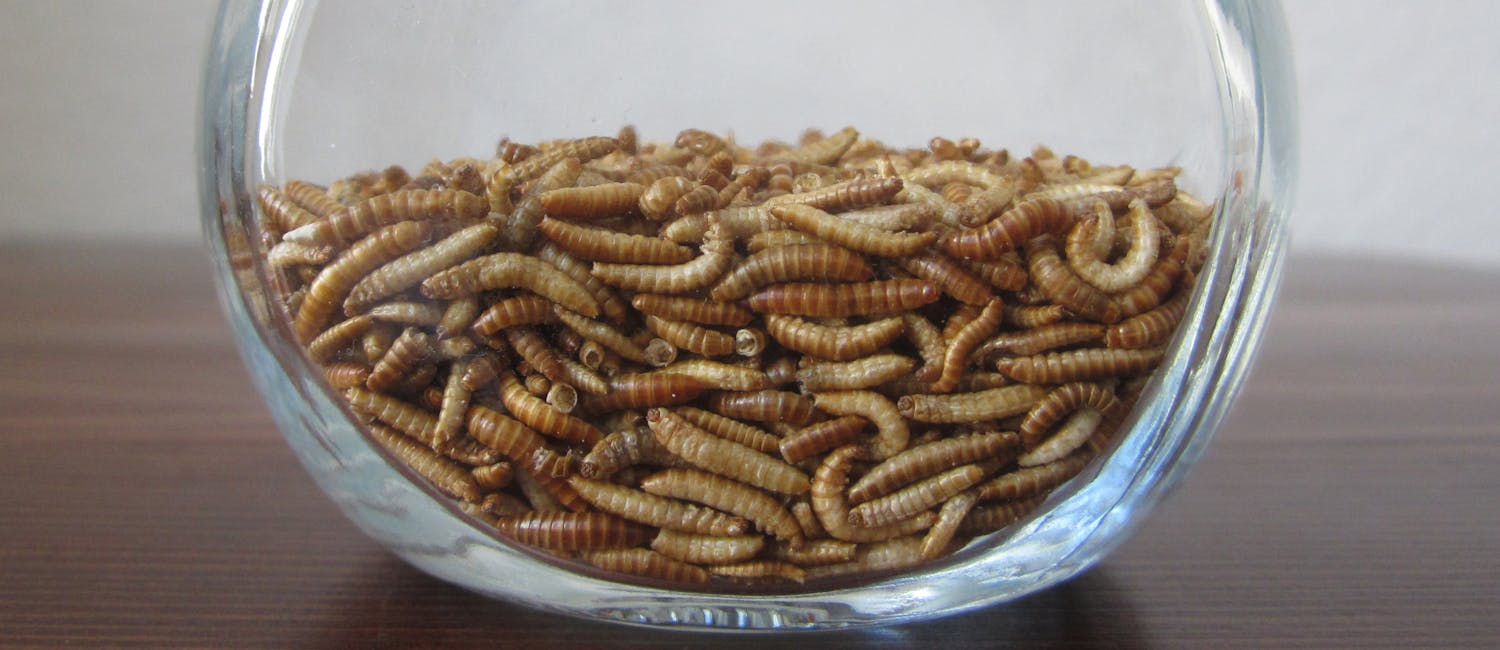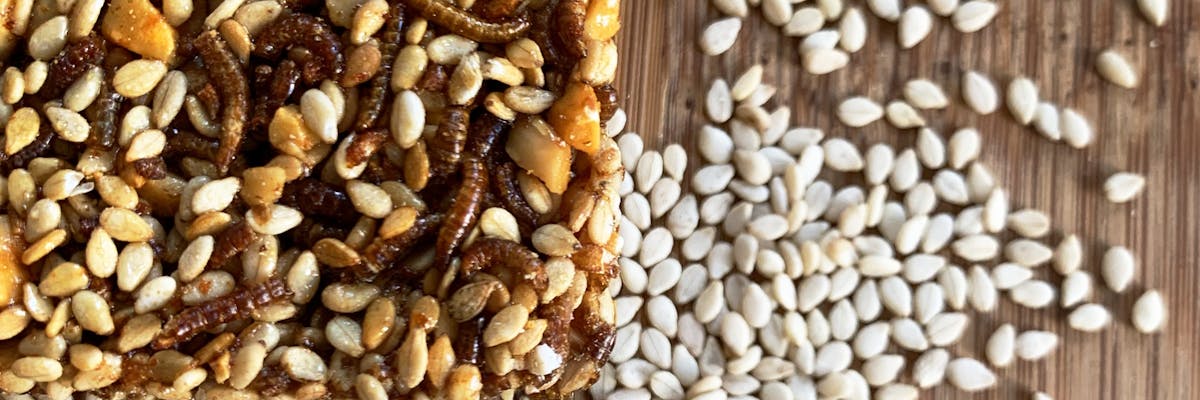On the Menu: Buffalo Worms
23 May 2020
5 min read

1. It is not a worm?
The Alphitobius diaperinus, as this crawler is gracefully called in Latin, is actually not a worm but a beetle [1]. So why call it a worm then? It seems even the internet does not really know, as answers to this question of global importance (duh!) are lacking. Apart from the difficult Latin name, the buffalo worm is also commonly known as the lesser mealworm or even litter beetle. So what are we dealing with here now? A worm that is a worse version of another worm but is not even a worm in the end, makes total sense right?
The buffalo worm we know as an edible insect is actually tha larva of the beetle with the Latin name from above. And the actual English name of this bug is the lesser mealworm, because it is very similar to the yellow mealworm. Thanks to Crickster for finding the solution to this naming problem: apparently scientists in the 19th century thought the looks of the lesser mealworm resembled that of a buffalo [2]. And because "lesser mealworm" does not sound very appealling, the nickname "buffalo worm" is what we're stuck with now.
Seems like we are dealing with a bug with a serious identity crisis...
2. It is a bit of a dirty troublemaker
Googling the Latin name of our creepy crawler in the spotlight most likely leads you towards all kinds of information on how to get rid of them. And for good reasons, as the non-cultivated of the one we eat is a plague.
It is widely known as a pest insect [1]. The worm damage the structure of houses eating their way through basically everything looking for a warm spot to pupate (a.ka. transform into a beetle).
Eating its way through everything is quite literally too by the way. Housing structure, litter, all kinds of poo, and even molded food (which is a delicacy to them) is on the menu for this nasty crawler.
3. Made for mass-production
Compared to the yellow mealworm, the lifecycle of the buffalo worm is about half as long [3]. This means that in the same amount of time, twice as many buffalo worm can be produced compared to the yellow mealworm. In optimal conditions, it takes about a month to go from an egg to adulthood. Female adult beetles, in turn, usally lay between 200 and 400 eggs. Assuming that 50% of these bugs are female, a small population of these buggers can grow 100 - 200 times every month. If that isn't reproduction at its best!
Another great aspect of the mealworm in general, is that it has a cosmopolitan distribution [1]. Fancy as it sounds, this simply means that it can be found basically anywhere around the world. Even though the optimum temperature and humidity for the buffalo worm are 31 degrees and 70%, it can find its home almost anywhere and does not require serious cold or heat.
4. Unbeaten nutritional power
When it comes to nutriotional power this bugger finally lives up to its nickname, because it is as strong as an ox (or: buffalo). Every 100 grams contains about 60 grams of complete protein [2]. A small percentage of carbs and a good amount of fatty acids complete the nutritional picture of this new superfood. Or so we thought, because that's not even all of it.
The division of macros is amazing, but so are the micronutrients found in buffalo worms. It is especially rich in zinc and iron even though it is not the insect with the highest amount of iron (all hail the cricket). It bested iron levels of beef, which is one of the richest sources of iron around [4].
5. Versatile ingredient
After section two, we understand you would not immediately go online and get yourself a batch of buffalo worms. But they are a good match with almost anything you have and do in your kitchen. Tastewise, the buffalo worm can be best described as nutty and having a mild taste that compares to a peanut or cashew nut.
Considering nuts can be used in almost any recipe, be it sweet, savory or sour, the same can be said for its insect counterpart. From ingredient of your own homemade burger to lovely banana bread, the buffalo worm fits.
Got a little enthusiastic? Well, it's your lucky day as we magically seem to have just all of these recipes for you including how to use this versatile ingredient in your kitchen! Find these and more in our recipes.
Nutritional value
Less fun but definitely not less relevant: the nutritional values of this power bug. As mentioned above, there are few other bugs that can compete with the nutritional power of the buffalo worm. Per 100 grams they contain:
- 484 calories
- 56 grams of protein (48% of the calories)
- 6 grams of carbohydrates (5% of the calories)
- 24 grams of fat (47% of the calories)

- https://en.wikipedia.org/wiki/Alphitobius_diaperinus
- Paolo Lucchesi. 2019. 8 Interesting Facts about the buffalo worm. Accessed 10 May, 2020 at https://www.eatcrickster.com/blog/buffalo-worm-facts
- Livin Farms. (24 July, 2018). Mealworm vs Buffalo Worm- What is the Difference? Accessed 10 May, 2020 at https://www.livinfarms.com/blog-1/2018/7/24/mealworm-vs-buffalo-worm-what-is-the-difference
- Erika Gebel Berg (November 11, 2016). Edible Insects Have More Iron Than Sirloin Beef. Accessed 10 May, 2020 at https://www.scientificamerican.com/article/edible-insects-have-more-iron-than-sirloin-beef/
- Foodinsects. BUFFALOWÜRMER ESSEN – NÄHRWERTE, GESCHMACK, ZUBEREITUNG. Accessed 23 May, 2020 at https://foodinsects.de/insekten-entdecken/infos-und-naehrwerte-essbarer-insekten/buffalowuermer-essen/
